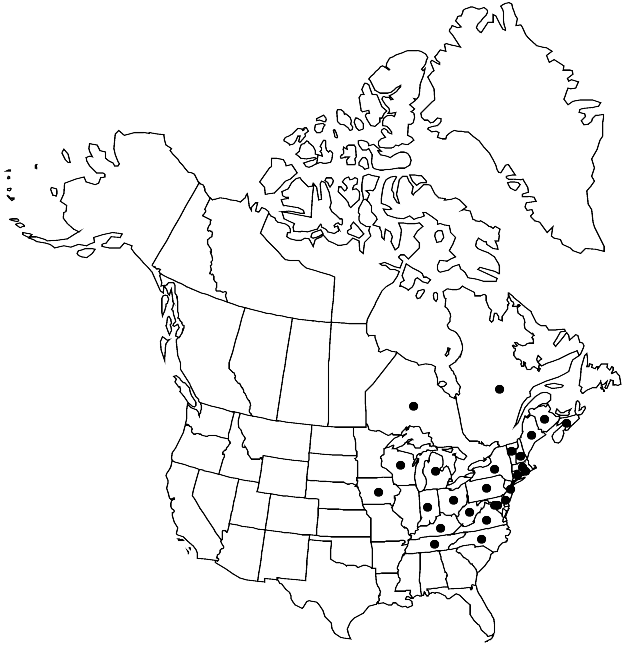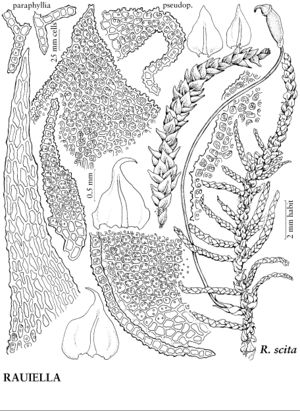Rauiella scita
Hedwigia 76: 287. 1937.
Stems 4–6 cm, branches 2–3 mm; paraphyllia weakly branched. Stem leaves erect-spreading when moist, broadly ovate to cordate-deltoid; margins loosely revolute proximally, plane distally; apex narrowly long-acuminate; laminal cells 5–6 µm, papillae 3–6. Branch leaves appressed when dry, erect-spreading when moist, 0.4 mm; apex acute; costa pellucid proximally; laminal cells 5–6 µm, papillae 4–6; apical cell truncate, multipapillose. Perichaetial leaves 1.5 mm. Seta 1–2 cm. Capsule with operculum obliquely short-rostrate; endostome segments narrowly perforate, cilia in groups of 2 or 3. Spores 10–13 µm, finely papillose.
Phenology: Capsules mature fall–early winter.
Habitat: Bark, base of hardwoods, mature forests
Elevation: moderate elevations
Distribution

N.B., N.S., Ont., Que., Conn., Del., D.C., Ind., Iowa, Ky., Maine, Md., Mass., Mich., N.H., N.J., N.Y., N.C., Ohio, Pa., R.I., Tenn., Vt., Va., W.Va., Wis.
Discussion
Rauiella scita is more likely to be confused with Leskea (Leskeaceae) than with any other Thuidiaceae. However, the abundant paraphyllia and multipapillose laminal cells distinguish R. scita. As in R. praelonga, the distal portion of the costa of the branch leaves is covered with laminal cells, but in R. scita the apical cell of the branch leaves is truncate and multipapillose, unlike the smooth, pointed apical cell in R. praelonga.
Selected References
None.
